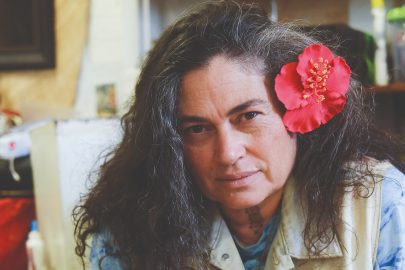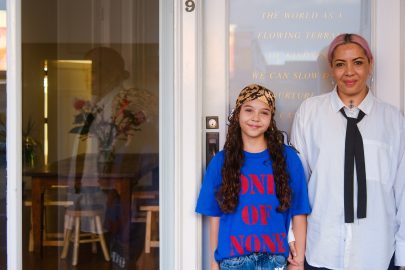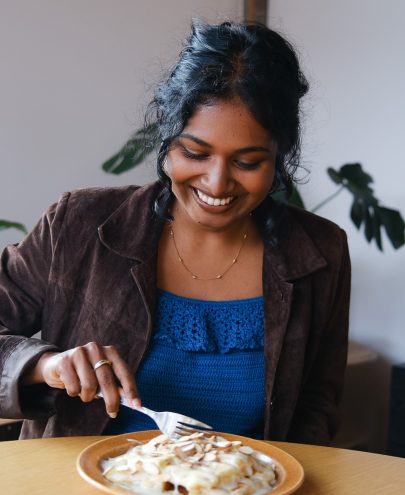Dec 22, 2014 Art
Creativity is bursting out all over.
Weren’t there a lot of puffed-out chests among New Zealand filmmakers this year? And with good reason. World’s best funny vampire movie? Jemaine Clement and Taika Waititi’s What We Do in the Shadows. Brilliant chess+kids+gangs (where else but here?): The Dark Horse, featuring a scorching performance by Cliff Curtis as the inspirational and mightily disturbed Genesis Potiki. Congrats to Curtis, by the way, for winning an Arts Foundation laureate award on top of that.
Kickass Maori kung fu in Toa Fraser’s The Dead Lands; glorious creepiness with Morgana O’Reilly and Rima Te Wiata in Housebound; hilarity jostling with suburban home truths, not to mention the blindingly good music, in Florian Habicht’s tribute movie Pulp: A Film About Life, Death and Supermarkets. And, of course, our 14th (!) and final year of hobbits. Peter Jackson, Richard Taylor and their crews have been inspirational from the start, and never flagged.
There’s been a thirst for ideas: Creative Mornings, Pecha Kucha, the ongoing engagement with urban planning of Auckland Conversations, social media’s #smackl hashtag, Nat Cheshire’s terrific speech at Semi-Permanent, the revival of Auckland Museum’s Late series… the more technology makes meetings and seminars and panel discussions unnecessary, the more we turn up.
There’s a new generation storming the comedy circuit, making Dai Henwood and Ben Hurley look like greybeards. Or did they always look like that? Check out Billy T winner Guy Montgomery, Chris Parker and others in The Basement’s Christmas show Hauraki Cruise.
Okareka Dance’s Mana Wahine headlined an outstanding year in dance. There’s new energy in theatre and more to come: Auckland Theatre Company has at last secured funding for its new theatre on North Wharf, new Silo director Sophie Roberts kicks off her first programme next year, and the glorious St James looks set to be restored. And the council has confirmed its support for an annual arts festival. If all goes according to plan, 2014 will be our last year without one.
Best Art Exhibitions
1 . The Walters Prize
This year’s Walters at the Auckland Art Gallery (mostly) was one of the best incarnations of the award so far. Luke Willis Thompson was a deserving winner, and Kalisolaite ‘Uhila (above right) showed the wider public just how brave, empathetic and politically charged contemporary art can be.
2. Light Show
It’s been a long time since Auckland’s had a genuine blockbuster like this. Principal curator Zara Stanhope and her team did a great job getting it here, and the show itself has brought the gallery’s renovated building wonderfully to life. Check out the Lego workshop on the way in: yes, everyone’s welcome to build stuff. Kids are loving it, and their parents quite possibly even more.
Auckland Art Gallery, to February 8, 2015.
Read more: Anthony Byrt’s Light Show review
3. Grant Stevens: Hold Together, Fall Apart
No one inflects motivational cheese with romance and good humour like Brisbane-based Grant Stevens. The video works in his exhibition at Starkwhite managed, brilliantly, to collapse the gap between self-help schlock and heartfelt intimacy.
4. Imogen Taylor: Glory Hole
Taylor scaled up significantly for this show at Michael Lett, creating half a dozen big works (one shown above left) that seem to draw simultaneously on Colin McCahon’s muntiest abstract phase and Dana Schutz’s wild colour palette. It takes guts, and supreme skill, to make paintings this ugly. She’s a great young artist.
5. Jono Rotman, Gow Langsford Gallery
Best? I hated everything about this show: the bloated scale, the slap-in-the-face aesthetic, the sensationalist exploitation of the sitters. But hats off to dealer Gary Langsford, who knew exactly how much public attention and outcry Rotman’s Mongrel Mob photographs would attract.
?
Worst Exhibition
My Country: Contemporary Art from Black Australia
Auckland Art Gallery deserves a lot of credit for this year’s programme, but My Country was a misfire. Essentially a collection show from Queensland Art Gallery, all it did was illustrate how far ahead in the post-colonial conversation our own artists are.





